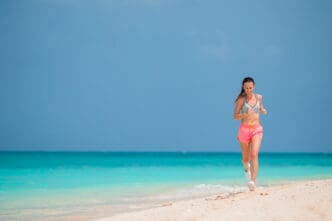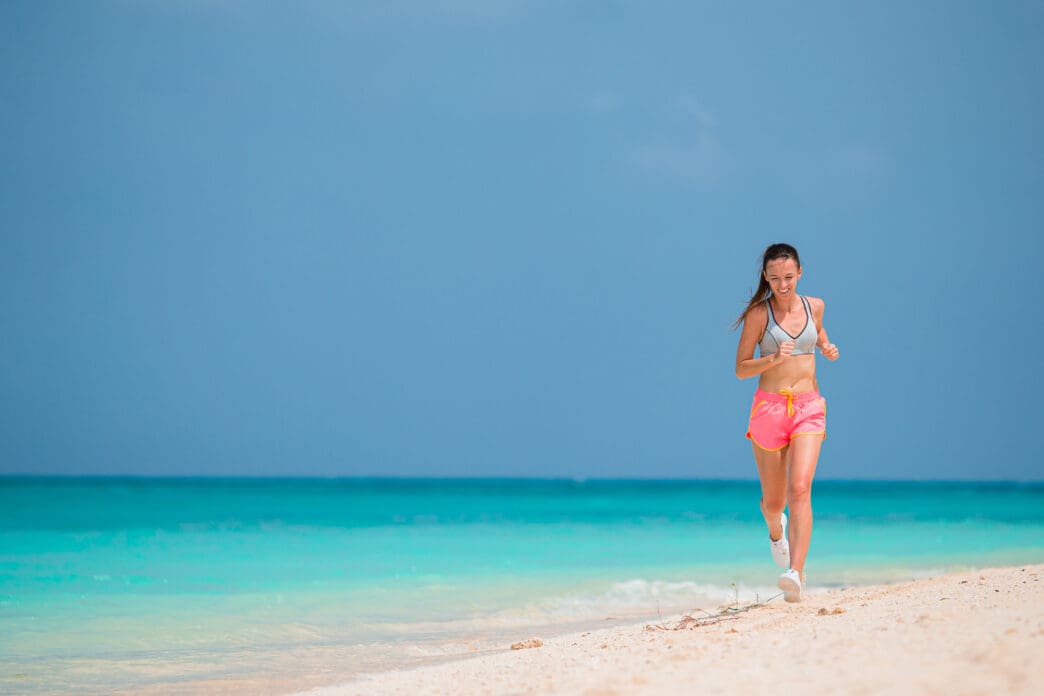A Quick Takeaway
The Story Behind the Trend
How to Make It Work for You
The Community View
Miami’s iconic beaches offer more than just sunbathing and swimming; they present a unique and incredibly effective training ground for runners seeking to elevate their fitness. Running in the sand, particularly along the vibrant shores of Miami, engages a broader range of muscles, reduces impact on joints, and significantly increases caloric expenditure compared to traditional pavement running. However, this challenging terrain also demands careful preparation and awareness due to increased effort, potential injury risks, and the specific environmental factors of a subtropical climate. Understanding both the profound benefits and inherent challenges is crucial for anyone looking to incorporate this dynamic workout into their routine, transforming a simple beach stroll into a powerful fitness endeavor.
The Allure of Miami’s Sandy Shores for Runners
Miami’s coastline, with its vast stretches of soft, golden sand and the rhythmic sound of crashing waves, naturally beckons outdoor enthusiasts. For runners, these beaches offer an escape from monotonous urban routes and the harsh impact of concrete. The picturesque environment provides a refreshing backdrop, turning a strenuous workout into a more enjoyable and mentally stimulating experience.
Beyond the aesthetic appeal, Miami’s year-round warm weather makes beach running a viable option almost any day. This consistent climate encourages an active lifestyle, allowing runners to consistently tap into the unique advantages that sand running provides. It’s a natural, ever-changing surface that demands more from the body, promising enhanced fitness outcomes.
Unpacking the Benefits of Sand Running
Engaging with the unstable surface of sand forces the body to adapt in ways that traditional running simply cannot replicate. This translates into a multitude of physiological advantages, making it a highly effective cross-training tool or a primary workout for those seeking a different kind of challenge.
Enhanced Muscle Activation
When you run on sand, your body works harder to stabilize itself with each stride. This instability activates smaller, often overlooked stabilizing muscles in your feet, ankles, and lower legs that are less engaged on firm surfaces. Your calves, quadriceps, hamstrings, and glutes must exert greater force to propel you forward, leading to more comprehensive muscle development and strength gains.
The continuous effort to maintain balance and generate propulsion also significantly engages your core muscles. A stronger core is fundamental for overall running efficiency, injury prevention, and improved posture, making sand running an excellent functional workout.
Reduced Impact and Joint Stress
One of the most celebrated benefits of running on sand is its low-impact nature. The soft, yielding surface absorbs much of the shock generated with each foot strike, significantly reducing the stress on your joints, particularly your knees, hips, and ankles. This makes sand running an ideal option for individuals recovering from impact-related injuries or those looking to reduce wear and tear on their joints over time.
For runners who typically train on hard surfaces, incorporating sand runs can provide a welcome respite, allowing muscles and connective tissues to work differently without the constant pounding. It offers a gentler alternative for maintaining cardiovascular fitness and building strength without the typical joint strain.
Increased Caloric Expenditure
Because your body has to expend more energy to overcome the resistance and instability of the sand, running on this surface burns significantly more calories than running on pavement at the same pace. Studies suggest that running on sand can increase energy expenditure by up to 1.6 times compared to running on a firm surface. This makes it an incredibly efficient workout for those aiming for weight management or increased fitness in a shorter amount of time.
The higher energy demand translates to a more intense cardiovascular workout, even at a slower pace. Runners will find their heart rate elevating quickly, pushing their aerobic capacity and contributing to improved endurance.
Improved Proprioception and Balance
Proprioception, your body’s awareness of its position in space, is constantly challenged and improved when running on an uneven surface like sand. Each step requires micro-adjustments from your nervous system and muscles to maintain balance and prevent falls. This continuous feedback loop strengthens the neural pathways responsible for coordination and stability.
Enhanced proprioception and balance are invaluable for all runners, as they contribute to better agility, reduced risk of falls on any terrain, and more efficient movement patterns. It teaches your body to react instinctively to unexpected changes, which is beneficial in various sports and daily activities.
Mental Wellness and Scenery
Beyond the physical benefits, running on Miami’s beaches offers profound advantages for mental well-being. The calming sounds of the ocean, the fresh sea breeze, and the expansive views provide a sensory experience that can reduce stress, improve mood, and foster a sense of mindfulness. Disconnecting from urban distractions and immersing oneself in nature can be incredibly therapeutic.
The sheer beauty of a Miami sunrise or sunset over the ocean can transform a challenging run into a deeply rewarding experience. This mental rejuvenation can enhance motivation and make sticking to a fitness routine more enjoyable and sustainable in the long term.
Navigating the Challenges of Sand Running
While the benefits are compelling, sand running is not without its difficulties. Runners must be aware of these challenges to approach this workout safely and effectively, particularly in Miami’s unique environment.
Increased Effort and Fatigue
The primary challenge for most runners is the sheer difficulty. Running on sand requires significantly more effort, often leading to slower paces and quicker fatigue compared to running the same distance on a track or road. This can be discouraging for beginners or those accustomed to faster times, requiring an adjustment in expectations and a focus on effort rather than pace.
The constant sinking and pushing through the sand means your muscles are under tension for longer periods, leading to greater muscle soreness initially. It’s crucial to acknowledge this increased demand and adjust your training volume accordingly.
Higher Risk of Specific Injuries
The unstable nature of sand, while beneficial for muscle activation, can also predispose runners to certain injuries if not approached carefully. Ankle sprains are a common concern due to the uneven surface and the increased range of motion required. Overworking the calves and Achilles tendons, which are heavily engaged in sand running, can lead to strains or Achilles tendonitis.
Additionally, the lack of firm arch support when running barefoot or in minimalist shoes on soft sand can contribute to conditions like plantar fasciitis. Proper form, gradual progression, and listening to your body are paramount to mitigating these risks.
Footwear Considerations
Choosing the right footwear for sand running presents a dilemma. Running barefoot allows for natural foot mechanics and strengthens foot muscles, but it also exposes feet to potential cuts, blisters, and debris. Conventional running shoes can quickly fill with sand, causing discomfort and chafing, and making them heavy.
Some runners opt for minimalist shoes or water shoes that drain well, offering some protection without excessive bulk. The decision often depends on the specific sand conditions (wet vs. dry, firm vs. soft) and personal preference, but it requires careful consideration to optimize comfort and safety.
Environmental Factors in Miami
Miami’s tropical climate adds another layer of challenge. High heat and humidity can significantly increase the risk of dehydration and heat exhaustion. Runners must prioritize hydration, wear appropriate sun protection (sunscreen, hat, sunglasses), and consider running during cooler parts of the day, such as early morning or late afternoon.
Furthermore, the beach itself is a dynamic environment. Tides change, affecting the firmness of the sand; wet, packed sand near the water’s edge is much firmer and easier to run on than soft, dry sand higher up the beach. Runners should also be mindful of debris like shells, rocks, or even jellyfish that can pose hazards.
Practical Tips for a Successful Sand Run in Miami
To safely and effectively harness the power of sand running, especially on Miami’s beautiful but demanding beaches, a strategic approach is essential.
Start Gradually
Do not attempt to run your usual mileage or pace on sand from the outset. Begin with short intervals, perhaps 10-15 minutes of alternating running and walking. Gradually increase your running time and distance over several weeks, allowing your muscles, tendons, and ligaments to adapt to the new demands. This progressive overload is key to building strength and preventing injury.
Choose Your Sand Wisely
For beginners, the firmer, wet sand closer to the water’s edge is often the best starting point. It provides a more stable surface, reducing the immediate challenge and risk of ankle rolls. As you build strength and confidence, you can venture into the softer, drier sand higher up the beach for a more intense workout. Always scan the area for any hidden debris before you start.
Footwear and Hydration
Consider your footwear carefully. For shorter runs, going barefoot can be beneficial for foot strength, but ensure the sand is clear of hazards. For longer runs, a lightweight, flexible shoe that drains well or even a dedicated sand-running shoe might be preferable. Always carry water, especially in Miami’s heat, and hydrate proactively before, during, and after your run. Don’t forget sunscreen, a hat, and sunglasses to protect against the strong Florida sun.
Focus on Form
Sand running often requires a slight adjustment in form. Aim for shorter, quicker strides (higher cadence) rather than long, powerful ones. Lift your feet rather than shuffling through the sand, which can conserve energy and reduce friction. Maintain a slight forward lean from your ankles, and keep your gaze forward, not down at your feet, to help with balance and posture.
Listen to Your Body
Pay close attention to how your body feels. Some muscle soreness is normal, but sharp pain, especially in your ankles, calves, or feet, is a sign to stop. Incorporate rest days into your training schedule, and consider cross-training with other activities like swimming or cycling to give your running muscles a break while maintaining cardiovascular fitness. Flexibility and strength training, particularly for the lower legs and core, will also support your sand running endeavors.
Running on Miami’s sandy beaches offers an unparalleled opportunity to transform your fitness, engaging muscles in novel ways and providing a low-impact yet highly effective workout. While the challenges of increased effort, potential injury risks, and environmental factors are real, a mindful and progressive approach can unlock a wealth of benefits. By starting slowly, choosing the right conditions, and prioritizing proper form and hydration, runners can safely embrace this dynamic terrain, turning a simple beach run into a powerful and mentally rejuvenating experience.








